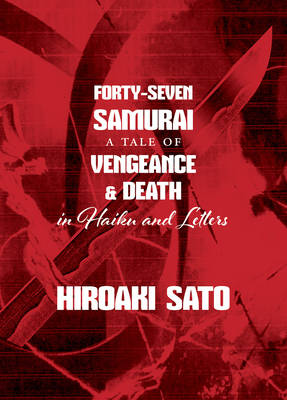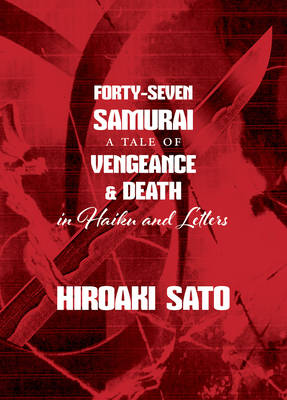
- Afhalen na 1 uur in een winkel met voorraad
- Gratis thuislevering in België vanaf € 30
- Ruim aanbod met 7 miljoen producten
- Afhalen na 1 uur in een winkel met voorraad
- Gratis thuislevering in België vanaf € 30
- Ruim aanbod met 7 miljoen producten
Forty-Seven Samurai
A Tale of Vengeance & Death in Haiku and Letters
Hiroaki SatoOmschrijving
One of the most spectacular vendettas ever: the history and haiku behind the mass-suicide featured in the 2013 film 47 Ronin
A remarkable and true tale of loyalty, vengeance, and ritual suicide. . . . In the spring of 1701, the regional lord Asano Naganori wounded his supervising official, Kira Yoshinaka, during an important ceremony in the ruling shogunate's Edo Castle and was at once condemned to death. Within two years, in the dead of winter, a band of forty-seven of Asano's retainers avenged him by breaking into Yoshinaka's mansion and killing him. Subsequently, all the men were sentenced to death but allowed to perform it honorably by seppuku.
This incident--often called the Ako Incident--became a symbol of samurai honor andat once prompted stage dramatization in kabuki and puppet theater. It has since has been told and retold in short and long stories, movies, TV dramas. The story has also attracted the attention of foreign writers and translators. The most recent retelling was the 2013 Hollywood film 47 Ronin, with Keanu Reeves, though it was wildly and willfully distorted.
What did actually happen and how has this famous vendetta resonated through history? Hiroaki Sato's examination is a close, comprehensive look at the Ako Incident through the context of its times, portraits of the main protagonists, and its literary legacy in the haiku ofthe avengers. Also included is Sato's new translation of Akutagawa Ryunosuke's short story about leader Oishi Kuranosuke as he awaited sentencing.
Specificaties
Betrokkenen
- Auteur(s):
- Uitgeverij:
Inhoud
- Aantal bladzijden:
- 280
- Taal:
- Engels
Eigenschappen
- Productcode (EAN):
- 9781611720549
- Verschijningsdatum:
- 26/11/2019
- Uitvoering:
- Paperback
- Formaat:
- Trade paperback (VS)
- Afmetingen:
- 152 mm x 216 mm
- Gewicht:
- 340 g

Alleen bij Standaard Boekhandel
Beoordelingen
We publiceren alleen reviews die voldoen aan de voorwaarden voor reviews. Bekijk onze voorwaarden voor reviews.











